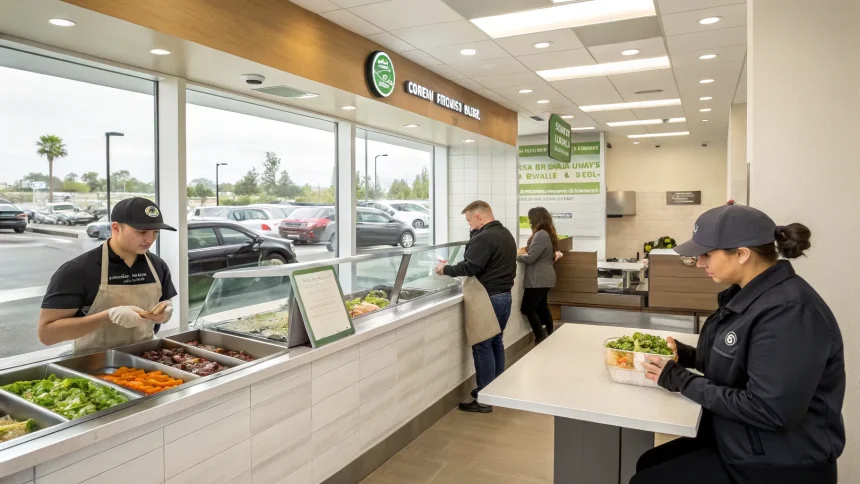A fast-casual chain known for drive-thru salads is pulling back to refocus its business in two markets. Salad and Go said it will shut dozens of locations and concentrate on operations in the Dallas metro area and Oklahoma. The move affects customers and staff in markets outside those regions as the company narrows its footprint to strengthen performance.
What the company said
“[Salad and Go] will close dozens of locations to concentrate efforts on operations in the Dallas metro area and Oklahoma.”
The company framed the shift as a way to direct resources to areas where it sees the most promise. No detailed timeline or list of affected sites was announced. The statement suggests a drive for tighter execution and fewer distractions from far-flung locations.
Salad and Go built its brand on quick service, low prices, and a focused menu. The chain expanded rapidly in recent years with small-footprint stores. Concentrating in North Texas and Oklahoma aligns with markets where the concept has strong awareness.
Why retrenchment happens in fast-casual
Pullbacks like this are common when costs rise and performance varies by market. Rent, labor, and food inflation can strain thin margins. A tighter regional cluster can reduce delivery miles, improve supply consistency, and simplify training.
Industry analysts say operators often regroup to protect core markets. Fewer regions mean simpler logistics and steadier quality. It also gives leaders time to adjust pricing, promotions, and staffing to local demand.
Closing dozens of locations now can limit ongoing losses. It may also free capital to upgrade kitchens, technology, and drive-thru systems where customer volume is strongest.
Impact on workers and customers
Store closures disrupt routines for regular guests and staff. Employees in affected locations may face transfers, reassignment, or job loss. The company did not detail support for workers during the transition.
Customers outside Dallas and Oklahoma will likely see store pages flagged for closure notices. Menu items and hours in the remaining markets should remain stable as resources shift there.
Communities that had counted on lower-priced salads and bowls may see fewer affordable options nearby. Some may trade convenience for longer drive times or switch to grocery meal kits.
Signals for competitors and suppliers
Competitors could seek to capture former Salad and Go customers. Regional chains with drive-thru salad or bowl menus may target these neighborhoods with coupons and app deals.
Suppliers tied to the chain’s broader footprint may renegotiate volumes. Concentrated purchasing in two markets could lead to tighter contracts and steadier produce quality. Smaller order ranges can also cut waste, a major cost in fresh food.
What comes next
Consolidation will test whether a regional strategy can steady sales and improve unit economics. Success in North Texas and Oklahoma could set a template for future growth. The company may reopen expansion once operations and profits stabilize.
Customers should watch for updated store status and hours. App users may see location lists change as closures roll out. Gift cards and rewards will likely remain valid in the two priority markets.
- Check local store pages for closure dates and hours.
- Redeem rewards at open locations in Dallas and Oklahoma.
- Look for transition notices about transfers or alternative sites.
Salad and Go’s reset reflects a simple aim: do fewer things, better, in places where demand runs strong. The next few months will show whether a leaner map delivers steadier service and stronger results. If it does, the chain could return to growth with a clearer playbook and a tighter regional base.







